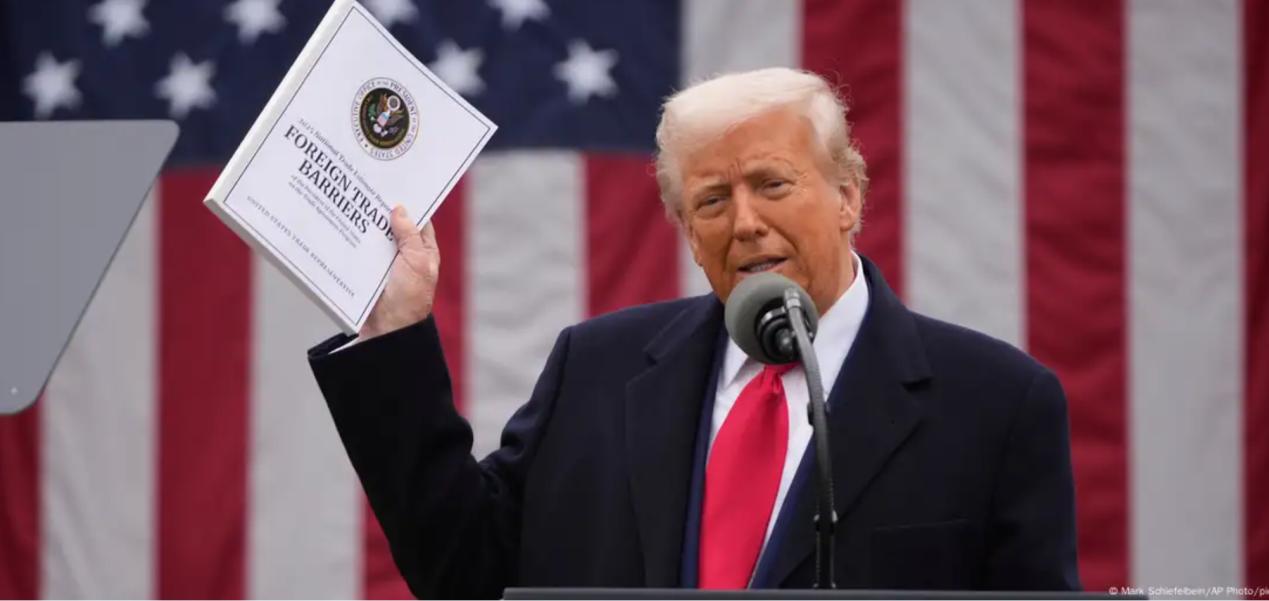
On April 9, 2025, the United States announced the imposition of a cumulative tariff of 104% on Chinese goods (including the previous 34% retaliatory tariffs and an additional 50% extra tariffs), marking a new and intense phase of the Sino-US trade war. This extreme measure has wide and profound implications, affecting multiple aspects such as the economy, technology, and geopolitics.
I. Impact on the economies of China and the United States
1. China: Short-term pressure and long-term opportunities coexist
In the short term, Chinese export enterprises are under tremendous pressure. The export costs of many industries such as steel, aluminum, machinery and equipment, and electronic products have increased significantly, severely compressing profit margins. Some small and medium-sized enterprises may face survival difficulties due to reduced orders and declining profits, and even experience layoffs or closures, causing a certain impact on the job market. However, China has the world's most complete industrial system and holds a dominant position in fields such as new energy, photovoltaics, and shipbuilding. Enterprises can optimize their supply chains and expand into emerging markets such as the Belt and Road Initiative to reduce their reliance on the US market. At the same time, countermeasures such as raising tariffs on US goods and restricting the export of key raw materials (such as rare earths and pharmaceutical raw materials) will also have a counter-effect on related industries in the United States.
2. The United States: Inflation intensification and risk of industrial hollowing out
US consumers will bear higher inflation. The imposition of tariffs leads to an increase in the prices of imported goods, raising costs for US businesses and consumers. Moody's estimates that US households will spend an additional $1,300 to $5,000 per year, pushing up the CPI by about 2% and intensifying the risk of stagflation. US businesses also face the risks of soaring costs and disrupted supply chains, which may lead to layoffs, price hikes, or even the transfer of production capacity. Take Apple as an example. If it were to shift its supply chain to Vietnam, it would take 18 months, and the yield rate of its Indian factories is only 50%, far lower than China's 99.9%. This would seriously affect its production efficiency and product quality.
II. Impact on the Global Supply Chain
The United States attempts to force enterprises to leave China through tariffs, but the reality presents significant challenges. The global supply chain has been deeply integrated, and China and the United States, as the world's two largest economies, have close trade relations and a high degree of interdependence. Escalation of trade frictions will lead to supply chain reorganization, and foreign-funded enterprises may transfer their factories to low-tariff regions such as Mexico and Southeast Asia. However, this is not an overnight process, and these regions lag behind China in terms of infrastructure and industrial support. Moreover, the accelerated decoupling of technology between China and the United States will gradually manifest its impact in fields such as chips and biomedicine, potentially hindering global technological innovation and industrial upgrading.
III. Impact on the Technology Sector
The United States may further tighten export controls on high-tech products such as chips to China, attempting to curb China's technological development. However, China is accelerating independent innovation and has overcome 21 "bottleneck" technologies. Competition between the two sides in areas such as semiconductors, AI, and 6G will become more intense. China is increasing investment in scientific research and development, cultivating high-quality talents, and promoting industrial upgrading and innovative development. At the same time, China is expanding technological sources and market space by strengthening technological cooperation with other countries, reducing its reliance on American technology.
IV. Impact on Geopolitics
Although the possibility of direct military conflict between China and the United States is low, the United States may exert pressure through issues in the Taiwan Strait and the South China Sea, while China strengthens cooperation with Russia, the Middle East, and ASEAN to counter the US containment. The unilateralist behavior of the United States has damaged its image and credibility in the international community and weakened its influence in global economic governance. Other countries may be vigilant about the US trade policies and accelerate the reform of the multilateral trading system to reduce economic dependence on the United States.
V. Impact on the International Community
Economies such as the European Union and ASEAN may push for mediation due to their own interests being affected. For instance, 53% of Vietnam's electronics factories rely on Chinese raw materials, and the US tariffs on China will affect the stability of its industrial chain. However, the unilateralist tendencies of the United States may weaken the effectiveness of multilateral solutions. The international community is concerned that the US "comprehensive tariff hikes" may spread to itself. If other countries follow the US example and impose tariffs at will under the pretext of "national security", the WTO rules will become a dead letter, and the global economy may return to a jungle era of "every man for himself".
The US imposition of a 104% tariff on Chinese goods is a double-edged sword, not only harming the interests of both China and the United States but also causing severe shocks to the global economy and international order. All parties should exercise restraint and resolve trade disputes through dialogue and consultation to jointly maintain the global free trade system and the stable development of the world economy.

Since 2022, the Fed has cumulatively reduced its balance sheet by $2.4 trillion through quantitative tightening (QT) policies, leading to a near depletion of liquidity in the financial system.
Since 2022, the Fed has cumulatively reduced its balance sh…
On December 11 local time, the White House once again spoke…
Fiji recently launched its first green finance classificati…
Recently, the European Commission fined Musk's X platform (…
At the end of 2025, the situation in the Caribbean suddenly…
The U.S. AI industry in 2025 is witnessing a feverish feast…